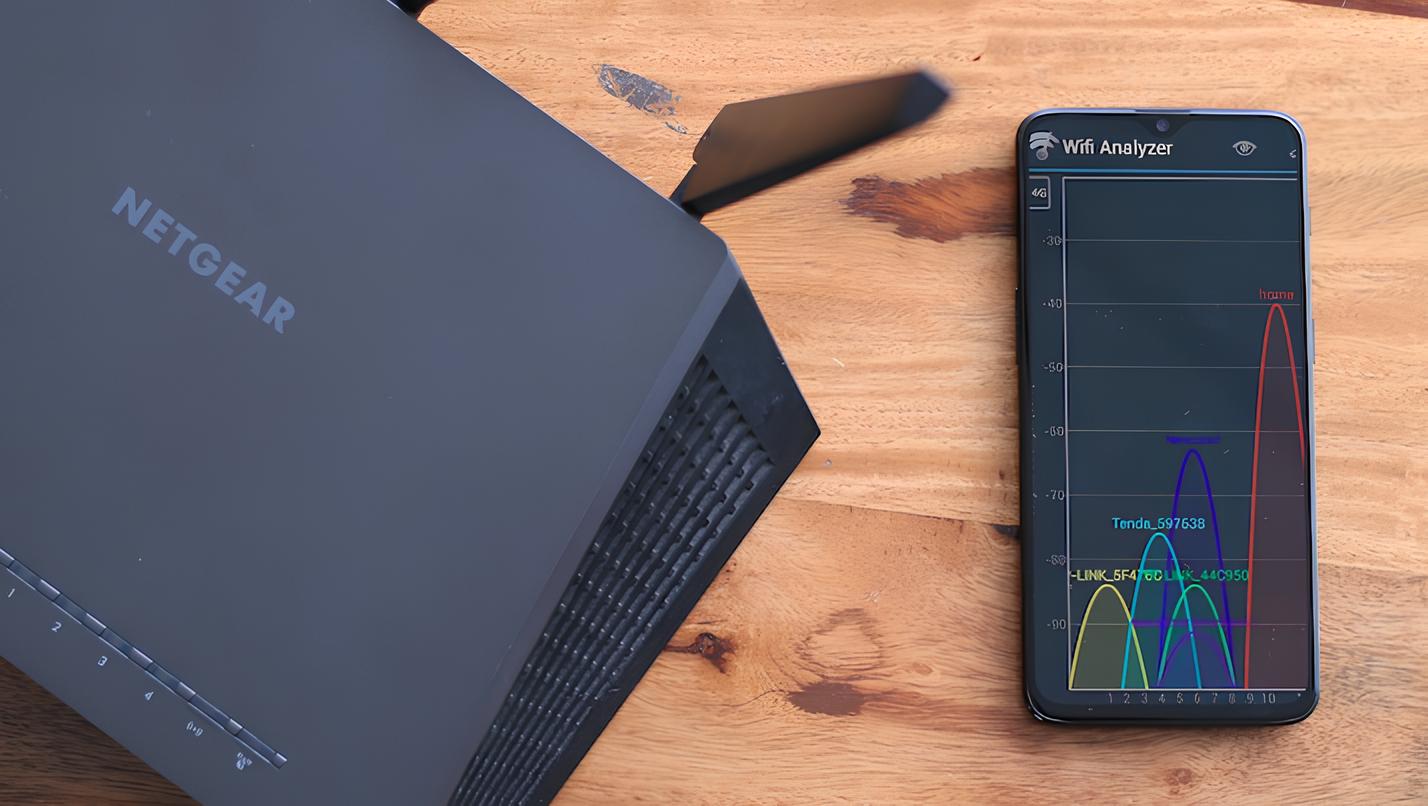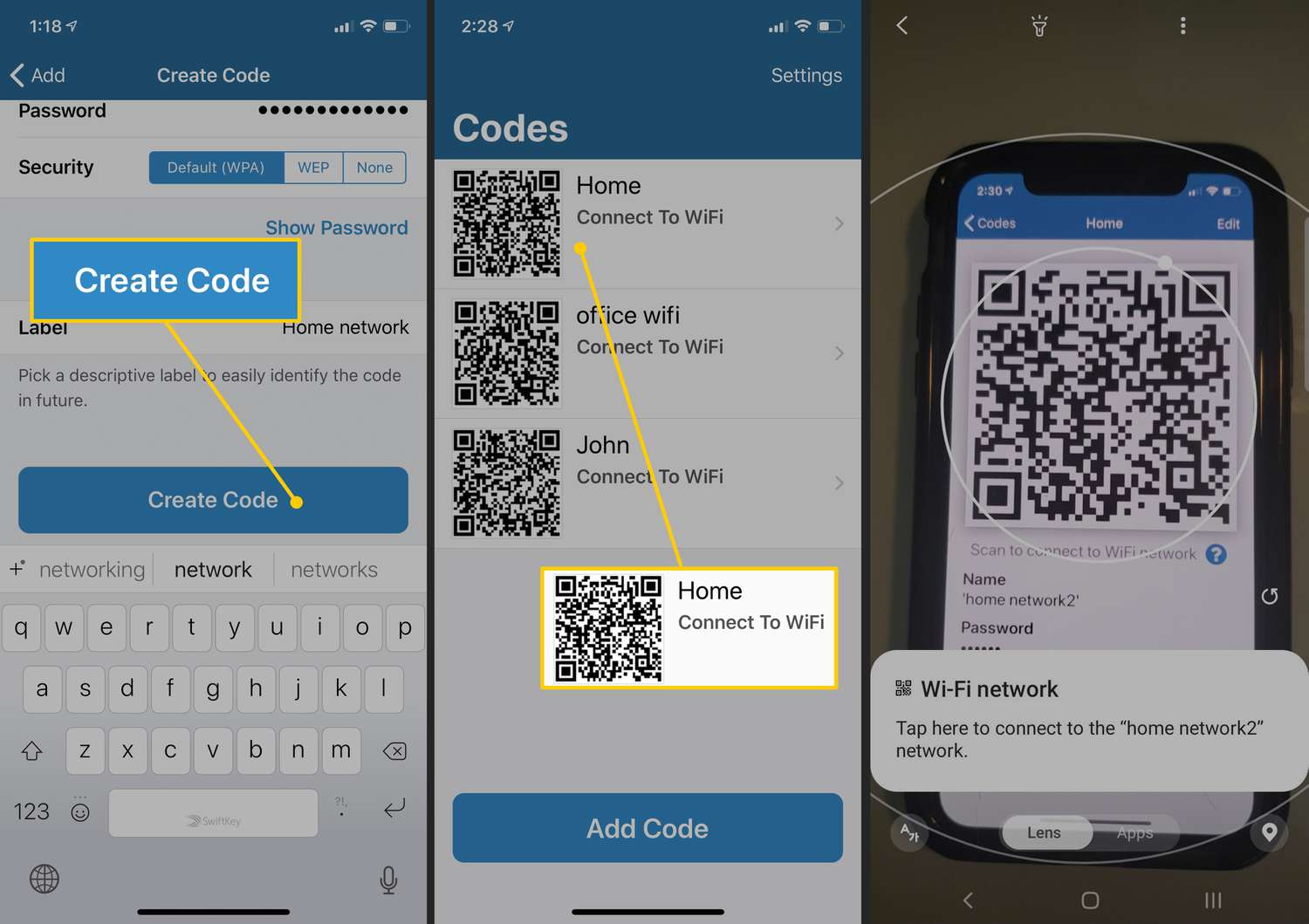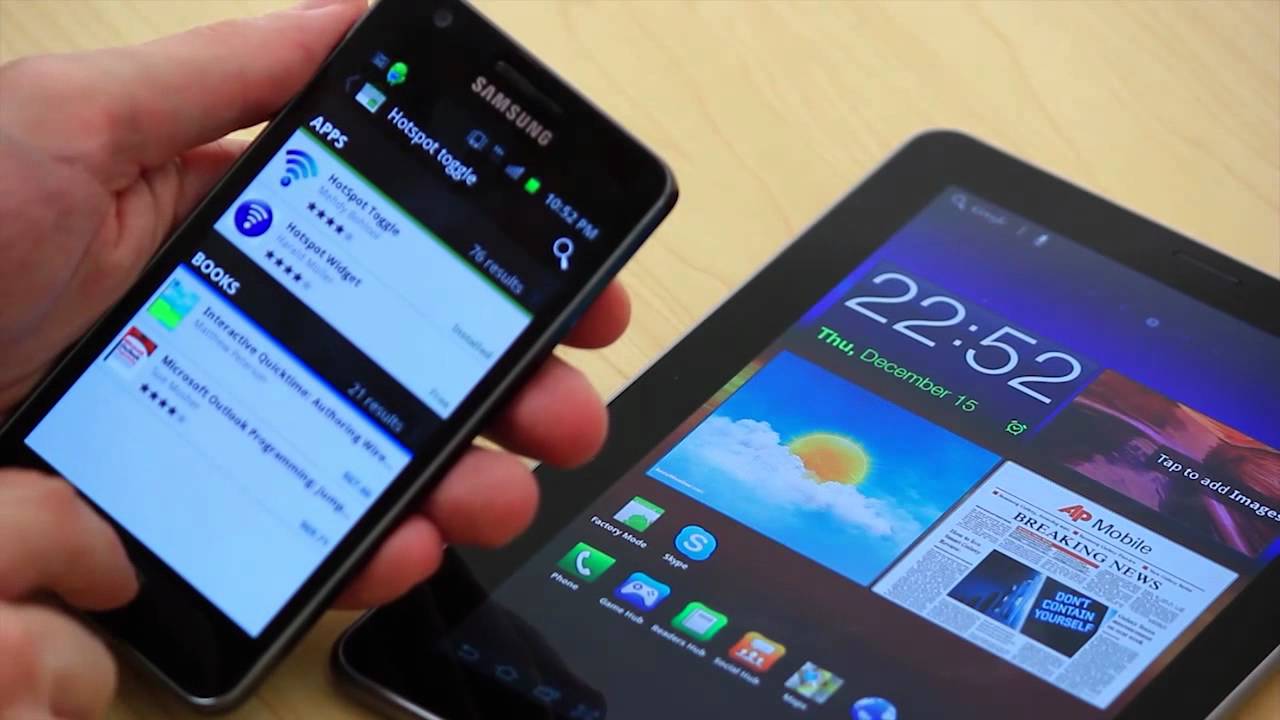Introduction
Creating a free Wi-Fi hotspot can be a convenient and generous way to share internet access with others. Whether you're looking to provide connectivity for guests, customers, or community members, setting up a free Wi-Fi hotspot can be a valuable service. In this article, we will explore various methods to create a free Wi-Fi hotspot, as well as important considerations for ensuring its security.
By following the steps outlined in this guide, you can easily establish a free Wi-Fi hotspot using your existing devices or by setting up dedicated hardware. Additionally, we will discuss the importance of securing your hotspot to protect both your network and the users who connect to it.
Now, let's delve into the methods for creating a free Wi-Fi hotspot and explore the steps involved in each approach. Whether you prefer using a mobile hotspot, setting up a router as a hotspot, or utilizing virtual router software, this article will provide you with the insights and instructions needed to make it happen. Furthermore, we will emphasize the significance of implementing security measures to safeguard your free Wi-Fi hotspot from potential threats.
Creating a free Wi-Fi hotspot can be a rewarding endeavor, offering connectivity to those in need and fostering a sense of community. As we proceed, you will gain the knowledge and confidence to establish a free Wi-Fi hotspot using methods that align with your preferences and resources. Additionally, you will learn how to secure your hotspot to ensure a safe and reliable internet experience for all users.
Method 1: Using a Mobile Hotspot
Creating a free Wi-Fi hotspot using a mobile hotspot is a convenient and straightforward method that leverages the internet connection of your smartphone or mobile device. This approach is ideal for individuals who need to quickly share internet access with others while on the go or in locations where traditional Wi-Fi routers are not available.
To begin, ensure that your mobile device supports the hotspot feature. Most modern smartphones offer this functionality, allowing you to broadcast a Wi-Fi signal using your cellular data connection. The steps to enable the mobile hotspot feature may vary slightly depending on the operating system of your device, but the general process involves accessing the settings menu, selecting the "Hotspot" or "Tethering" option, and activating the feature.
Once the mobile hotspot is activated, you can customize the network name (SSID) and set a secure password to control access to the hotspot. It is important to choose a strong and unique password to prevent unauthorized users from connecting to your hotspot and consuming your data allowance.
After configuring the hotspot settings, your mobile device will begin broadcasting a Wi-Fi signal that other devices can connect to. Users within the vicinity can locate and connect to the hotspot by searching for available Wi-Fi networks and entering the provided password. This allows them to access the internet using the data connection of your mobile device.
It's worth noting that while using a mobile hotspot is convenient, it's essential to monitor your data usage to avoid exceeding your plan's limits. Additionally, consider the battery life of your mobile device, as broadcasting a hotspot can consume power at a faster rate. If you anticipate a high volume of users connecting to the hotspot, it may be beneficial to have a portable power source on hand to keep your device charged.
In summary, creating a free Wi-Fi hotspot using a mobile hotspot is a practical solution for sharing internet access in various settings. Whether you're at a coffee shop, a community event, or a temporary location without Wi-Fi infrastructure, leveraging your mobile device's hotspot feature can provide connectivity to those in need. By following the simple steps to activate and secure the hotspot, you can offer a valuable service while maintaining control over who accesses the network.
Method 2: Setting up a Router as a Hotspot
Setting up a router as a Wi-Fi hotspot is a versatile and reliable method that allows you to provide free internet access in a controlled and scalable manner. Unlike using a mobile hotspot, which relies on a cellular data connection, configuring a router as a hotspot enables you to leverage a stable and potentially higher-speed internet connection, such as a broadband or fiber-optic service. This makes it an ideal solution for scenarios where a consistent and robust Wi-Fi network is required, such as in a small business, community center, or educational institution.
To begin, you will need a compatible Wi-Fi router that supports the hotspot or guest network feature. Many modern routers are equipped with this functionality, allowing you to create a separate network for guests while keeping your primary network secure. The specific steps for setting up a hotspot on your router may vary based on the manufacturer and model, but the general process involves accessing the router's settings through a web browser and configuring the guest network options.
Once you have accessed the router's settings interface, you can navigate to the section related to guest network or hotspot settings. Here, you can customize the network name (SSID) and set a secure password for the hotspot. It is important to choose a strong and unique password to prevent unauthorized access and protect the integrity of your network.
After configuring the hotspot settings, your router will begin broadcasting a separate Wi-Fi network that guests can connect to. Users within the vicinity can discover and connect to the hotspot by searching for available Wi-Fi networks and entering the provided password. This allows them to access the internet using the bandwidth of your primary internet connection, while keeping your main network secure and separate.
One of the key advantages of setting up a router as a Wi-Fi hotspot is the ability to manage and monitor the network usage more effectively. Many routers offer built-in tools for tracking the devices connected to the hotspot, monitoring data usage, and controlling access through features such as scheduling and bandwidth limitations. This level of control can be beneficial in ensuring fair and efficient use of the internet resources you provide.
In summary, configuring a router as a Wi-Fi hotspot offers a robust and customizable solution for sharing internet access with others. Whether you're establishing a guest network in a business environment or providing free Wi-Fi in a public space, leveraging your router's hotspot feature allows you to deliver reliable connectivity while maintaining control over network security and usage. By following the steps to set up and secure the hotspot, you can create a valuable service that meets the connectivity needs of your intended audience.
Method 3: Using a Virtual Router Software
Using virtual router software is an innovative and flexible approach to creating a free Wi-Fi hotspot, especially when dedicated hardware or mobile devices are not readily available. This method involves leveraging your computer or laptop to emulate the functionality of a physical Wi-Fi router, allowing you to share your internet connection with others seamlessly.
To begin, you will need to select and install a reliable virtual router software on your computer. Several reputable options are available, each offering user-friendly interfaces and essential features for creating and managing a virtual Wi-Fi hotspot. Once the software is installed, you can proceed to configure the hotspot settings according to your preferences.
Configuring the virtual router software involves defining the network name (SSID) and setting a secure password for the hotspot. It is crucial to choose a strong password to prevent unauthorized access and protect the integrity of your network. Additionally, some virtual router software may offer advanced options for customizing the network settings, such as controlling the maximum number of connected devices and managing bandwidth allocation.
After configuring the virtual router software, your computer will begin broadcasting a Wi-Fi signal that other devices can connect to. Users within the vicinity can search for available Wi-Fi networks and locate the virtual hotspot, enabling them to connect and access the internet using your computer's internet connection. This method is particularly useful in situations where you need to provide temporary or ad-hoc Wi-Fi access, such as during events, meetings, or in locations where traditional Wi-Fi infrastructure is unavailable.
One of the notable advantages of using virtual router software is the ability to leverage the processing power and internet connectivity of your computer to create a robust Wi-Fi hotspot. This approach allows you to offer internet access to multiple users without the need for additional hardware, making it a cost-effective and versatile solution for various scenarios.
In summary, using virtual router software to create a free Wi-Fi hotspot offers a practical and adaptable method for sharing internet access with others. Whether you're in a temporary location, a small business, or a community gathering, leveraging your computer as a virtual router allows you to provide reliable connectivity while maintaining control over network security and usage. By following the steps to install and configure the virtual router software, you can establish a valuable service that meets the connectivity needs of your intended audience.
Method 4: Securing Your Free Wi-Fi Hotspot
Securing your free Wi-Fi hotspot is of paramount importance to safeguard both your network and the users who connect to it. Without proper security measures in place, your hotspot could be vulnerable to unauthorized access, data breaches, and malicious activities. By implementing robust security practices, you can create a safe and reliable internet experience for all users while protecting the integrity of your network.
1. Encryption and Authentication
Utilizing encryption and authentication protocols is essential for securing your free Wi-Fi hotspot. By enabling WPA2 (Wi-Fi Protected Access 2) encryption and setting a strong password, you can prevent unauthorized users from intercepting or accessing the data transmitted over the network. Additionally, implementing MAC address filtering can further enhance security by allowing only specified devices to connect to the hotspot.
2. Network Isolation
Implementing network isolation measures is crucial to prevent unauthorized access to sensitive information and resources on your primary network. By configuring your hotspot to operate in isolation from your main network, you can mitigate the risk of intrusions and unauthorized access attempts. This ensures that users connecting to the hotspot are confined to a separate and secure network segment.
3. Regular Monitoring and Maintenance
Regularly monitoring and maintaining your free Wi-Fi hotspot is vital for identifying and addressing potential security vulnerabilities. This includes monitoring connected devices, network traffic, and overall network performance. By staying vigilant and promptly addressing any irregularities or suspicious activities, you can proactively safeguard your hotspot from security threats.
4. User Agreement and Acceptable Use Policy
Establishing a clear user agreement and acceptable use policy for your free Wi-Fi hotspot can help communicate the expectations and guidelines for users connecting to the network. This document should outline the terms of use, prohibited activities, and consequences for violating the policy. By setting clear expectations, you can promote responsible and secure usage of the hotspot.
5. Firmware Updates and Security Patches
Regularly updating the firmware of your router or virtual router software is crucial for addressing known security vulnerabilities and strengthening the overall security posture of your free Wi-Fi hotspot. Additionally, staying current with security patches and software updates for your network equipment and virtual router software is essential for mitigating potential security risks.
By prioritizing the security of your free Wi-Fi hotspot and implementing these measures, you can create a safe and reliable internet environment for users while protecting your network from potential threats and vulnerabilities. It is important to stay informed about evolving security best practices and adapt your security measures accordingly to maintain a resilient and secure Wi-Fi hotspot.
Conclusion
In conclusion, creating a free Wi-Fi hotspot presents a valuable opportunity to share internet access with others and contribute to connectivity in various settings. Whether you opt for using a mobile hotspot, setting up a router as a hotspot, or leveraging virtual router software, each method offers unique advantages and flexibility to meet the connectivity needs of your intended audience.
By following the methods outlined in this guide, you can establish a free Wi-Fi hotspot using existing devices or dedicated hardware, catering to scenarios ranging from temporary locations and community events to small businesses and educational institutions. The ability to provide internet access in such diverse environments underscores the significance of creating free Wi-Fi hotspots as a means of fostering connectivity and inclusivity.
Furthermore, the importance of securing your free Wi-Fi hotspot cannot be overstated. Implementing robust security measures, such as encryption, network isolation, regular monitoring, and user agreements, is essential for safeguarding the integrity of your network and ensuring a safe and reliable internet experience for all users. By prioritizing security, you can create a trusted and resilient Wi-Fi hotspot that promotes responsible and secure usage.
As technology continues to evolve, the methods and tools for creating free Wi-Fi hotspots may also undergo advancements. It is crucial to stay informed about emerging technologies and best practices to adapt and enhance the capabilities of your Wi-Fi hotspot. Embracing innovation and staying proactive in addressing security considerations will contribute to the sustained success and relevance of your free Wi-Fi hotspot.
Ultimately, the act of creating a free Wi-Fi hotspot goes beyond the technical aspects; it embodies a spirit of generosity and community empowerment. Whether you are providing connectivity for guests, customers, or members of the community, the establishment of a free Wi-Fi hotspot reflects a commitment to enhancing accessibility and connectivity. By embracing the methods and principles outlined in this guide, you can contribute to a more connected and inclusive digital landscape.
In summary, creating a free Wi-Fi hotspot is not only a practical endeavor but also a meaningful contribution to the connectivity ecosystem. By leveraging the methods discussed in this guide and prioritizing security, you can establish a free Wi-Fi hotspot that enriches the lives of those who benefit from its connectivity, fostering a sense of community and empowerment through technology.

























